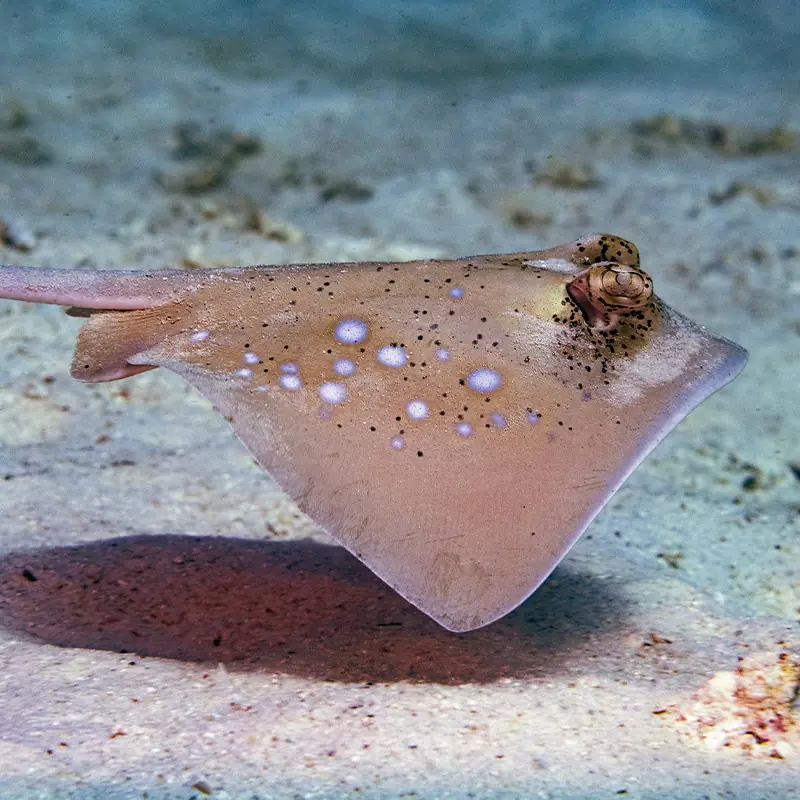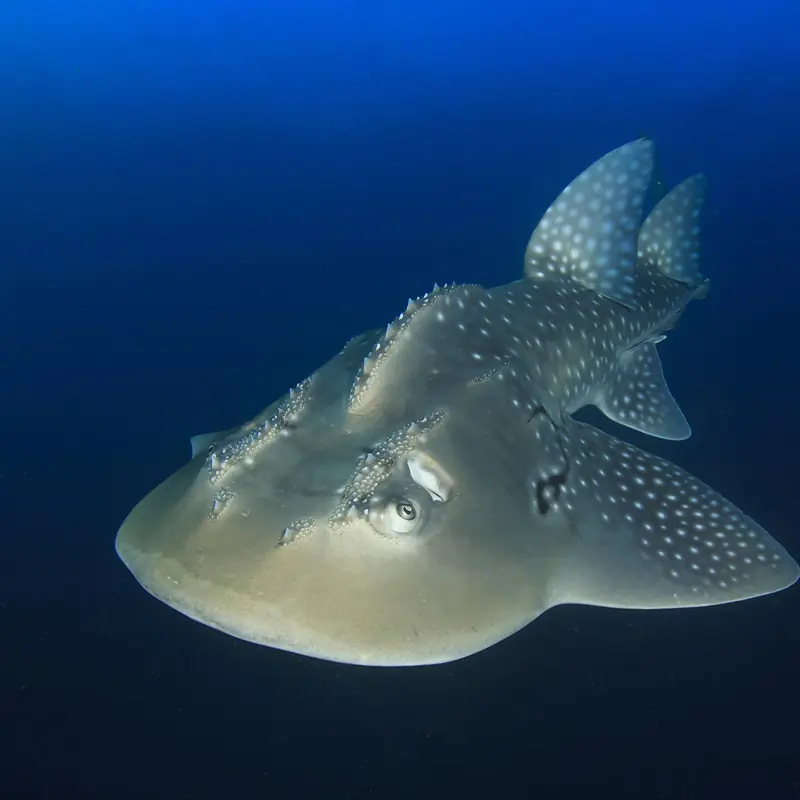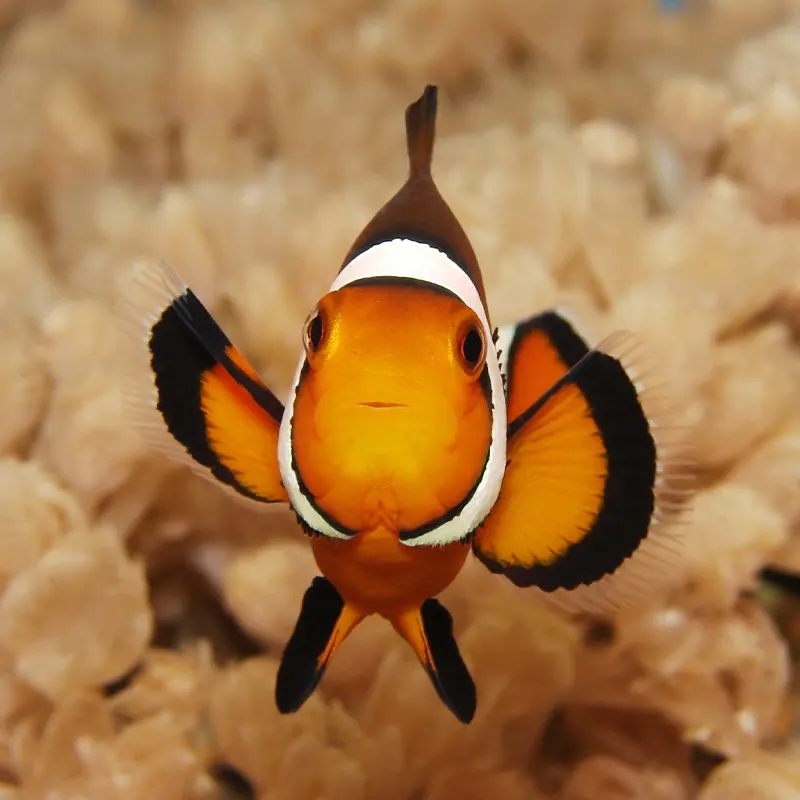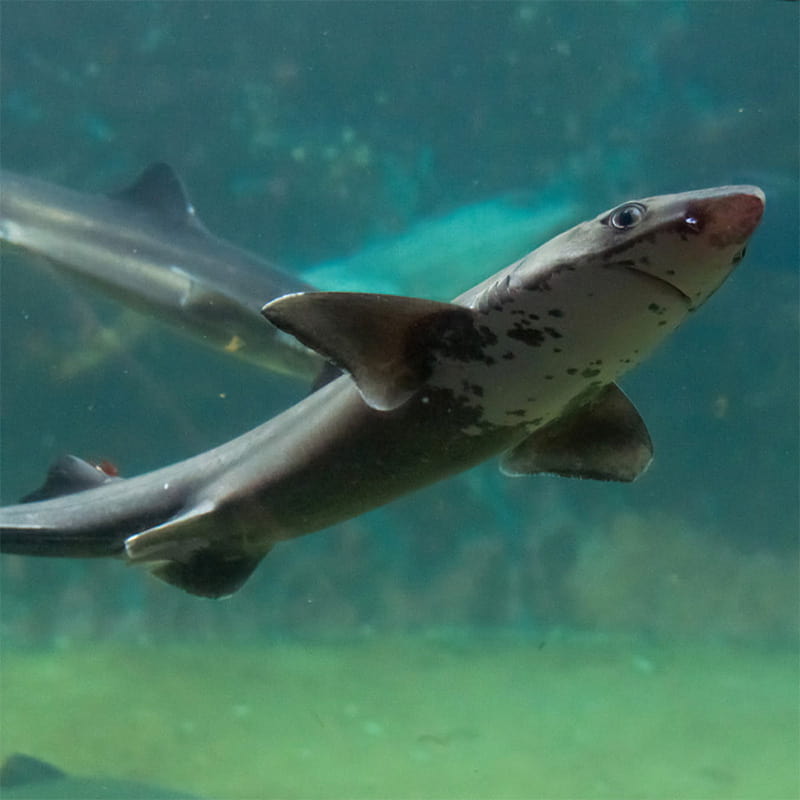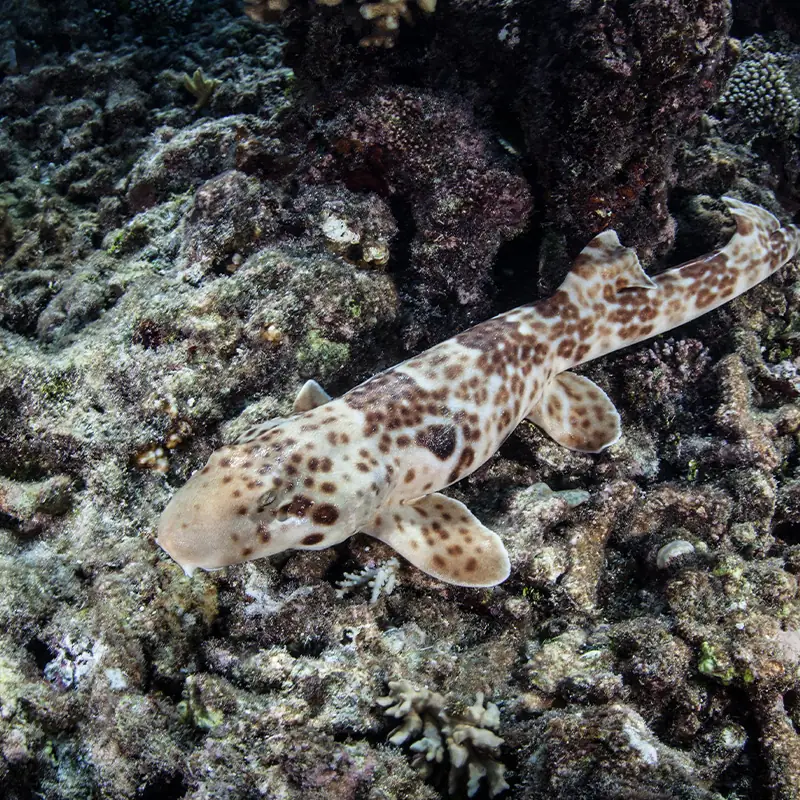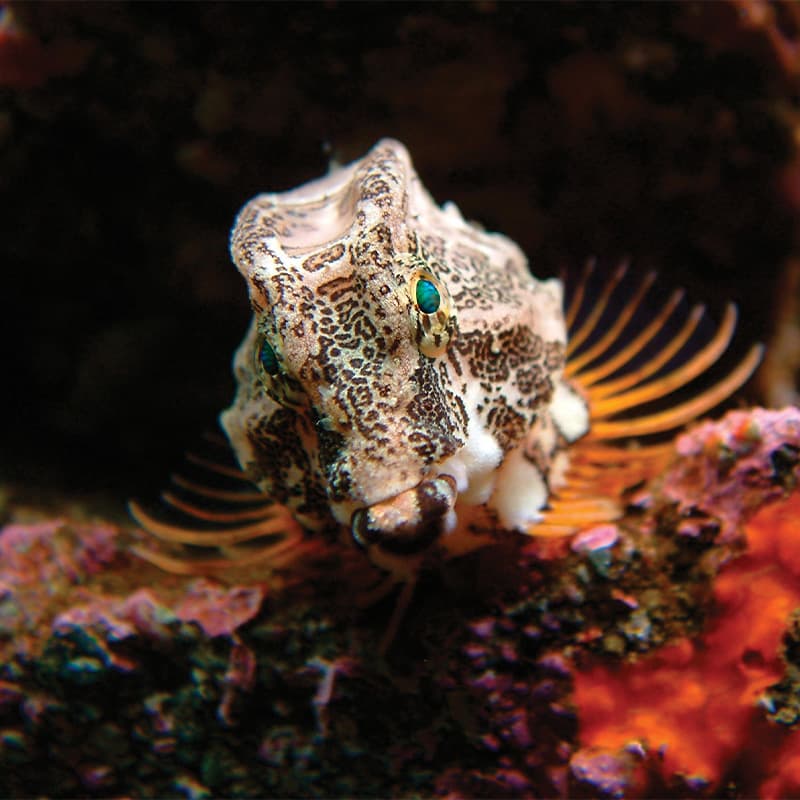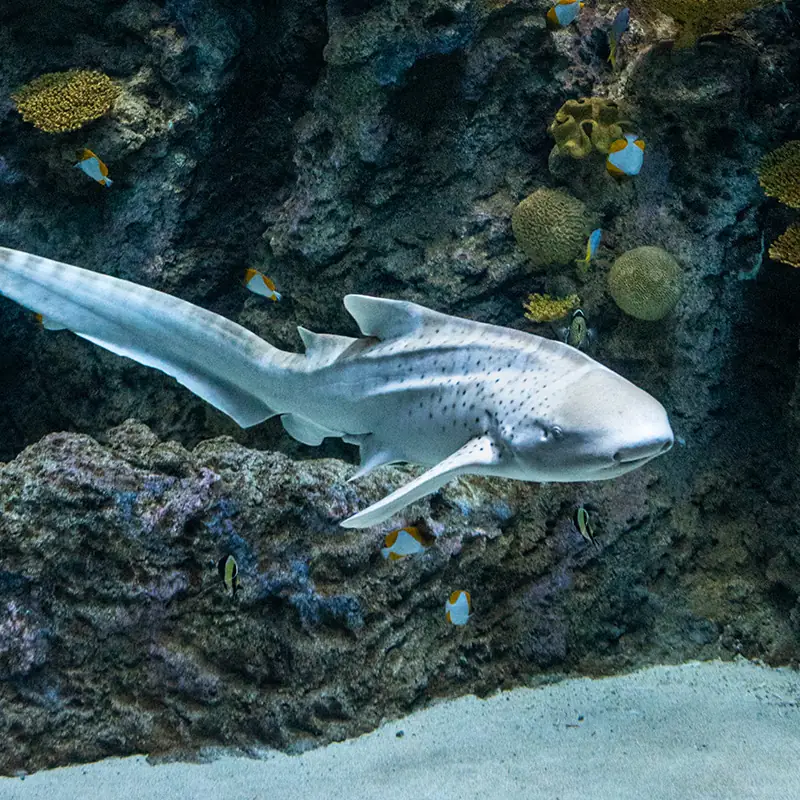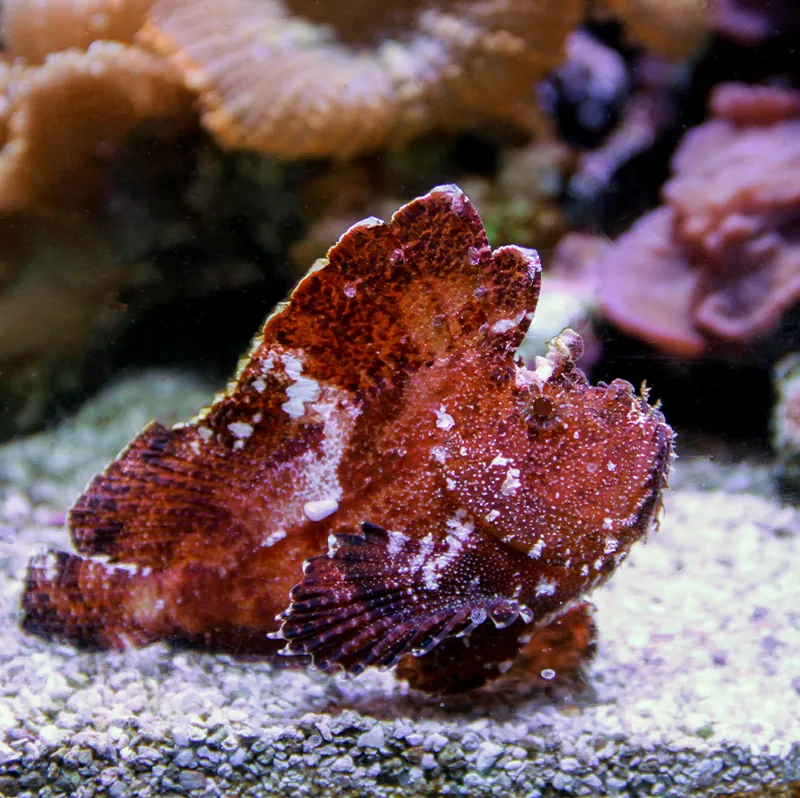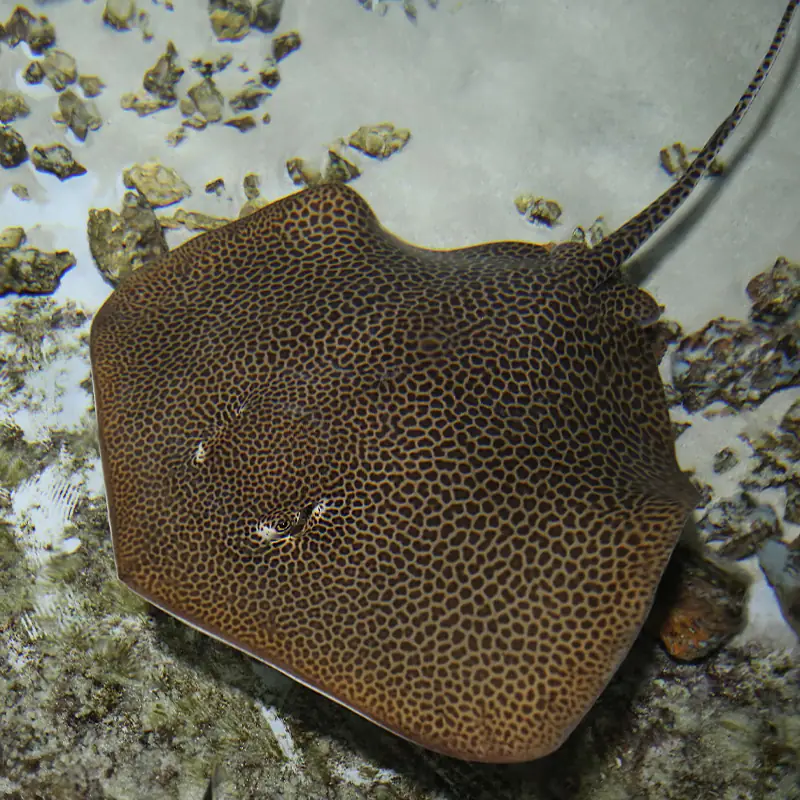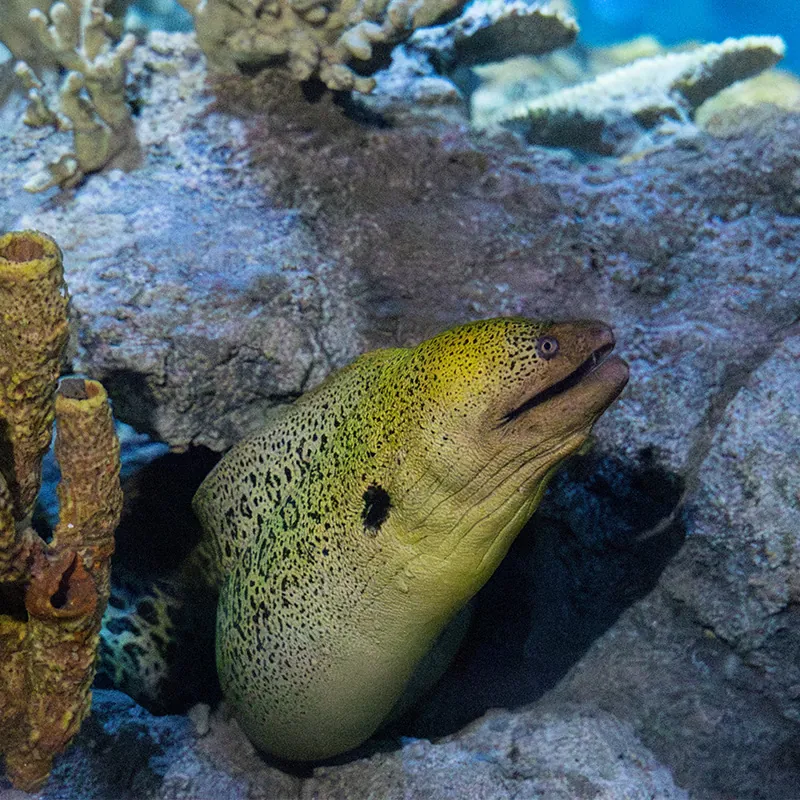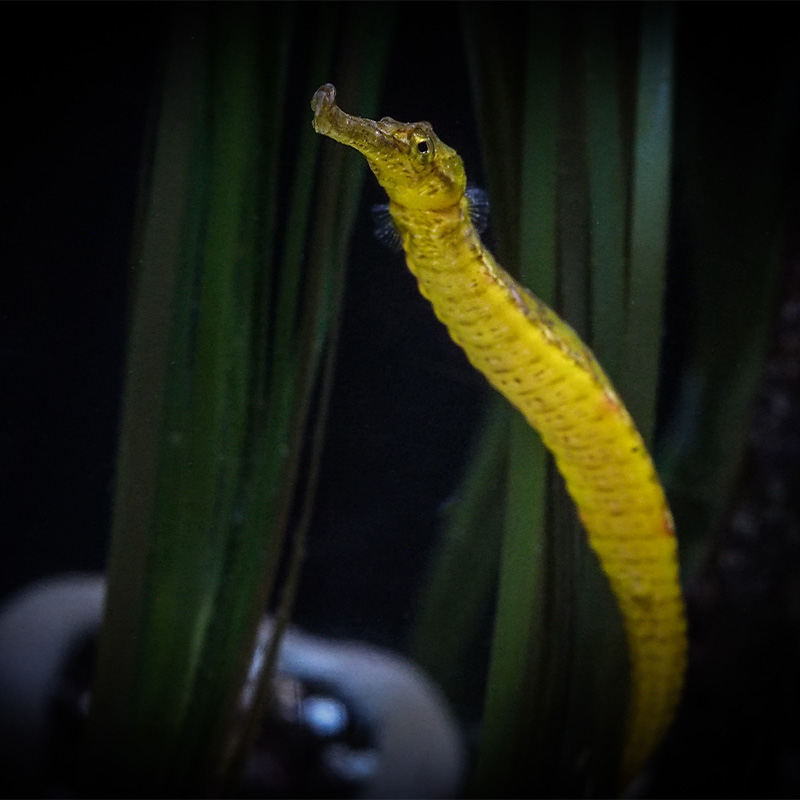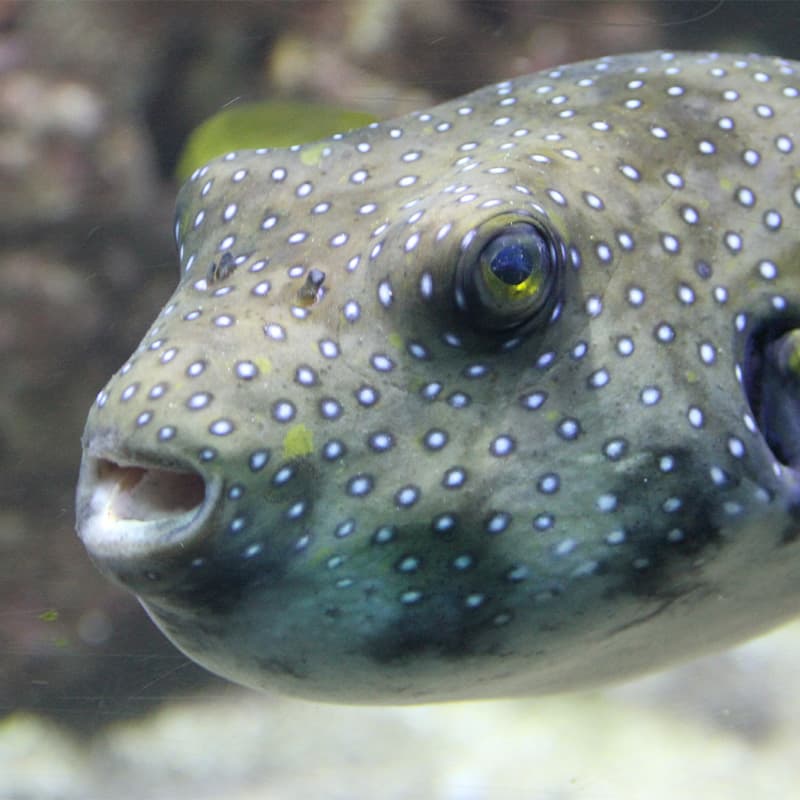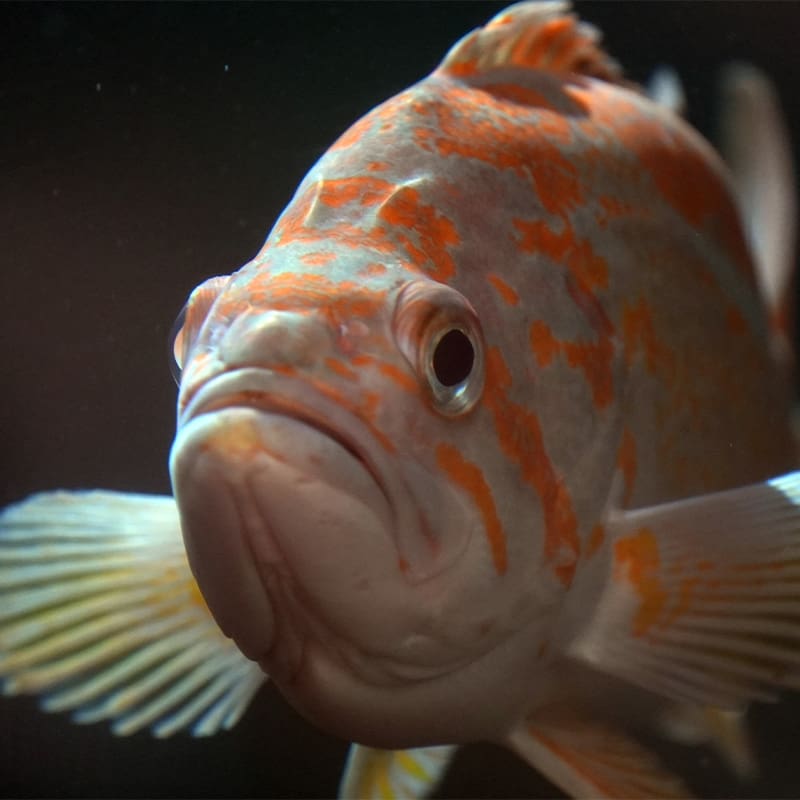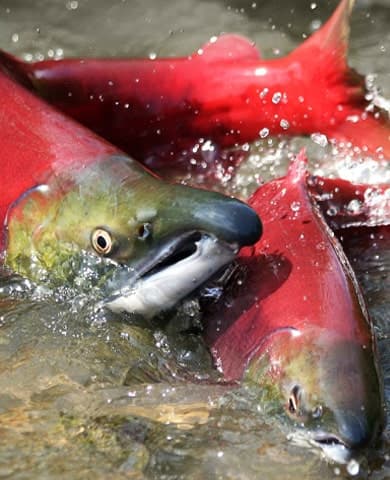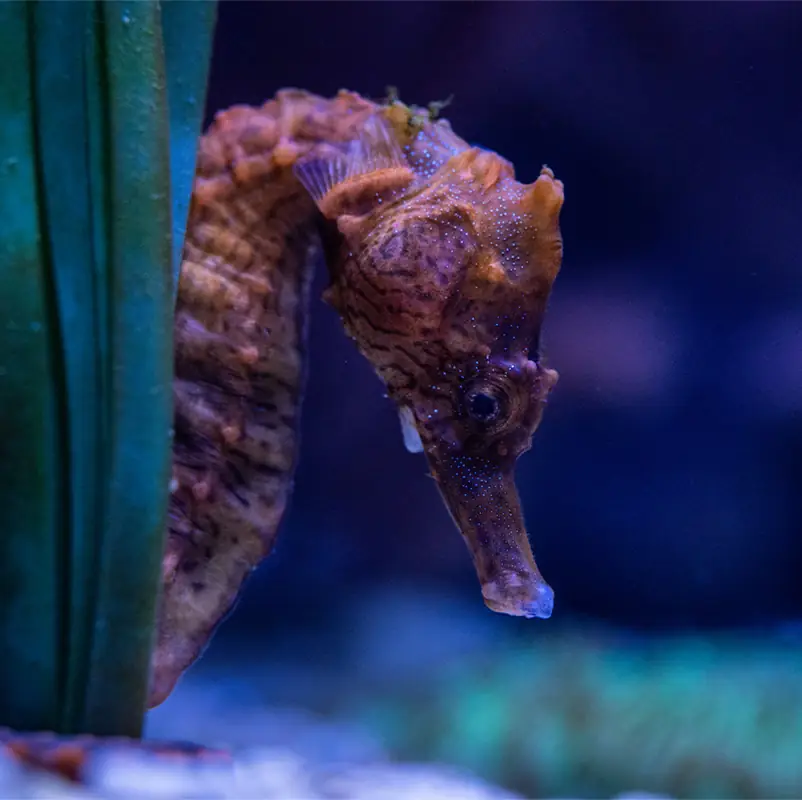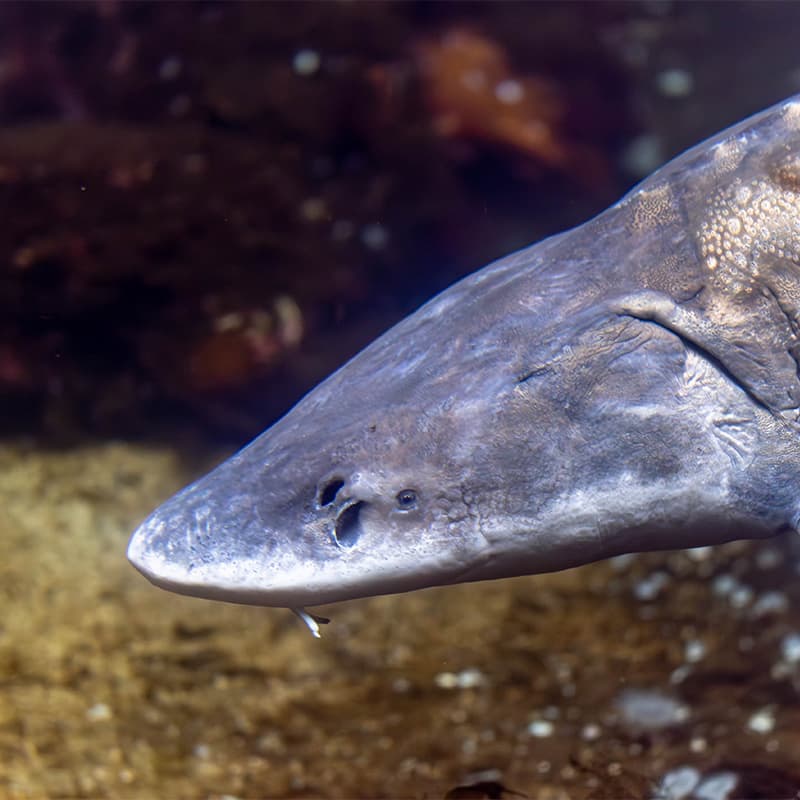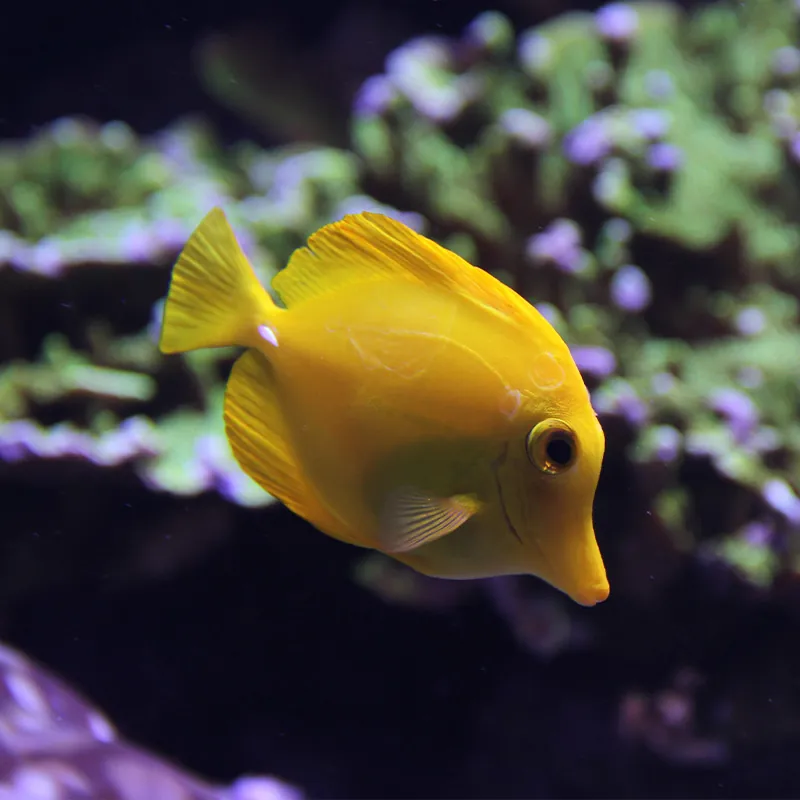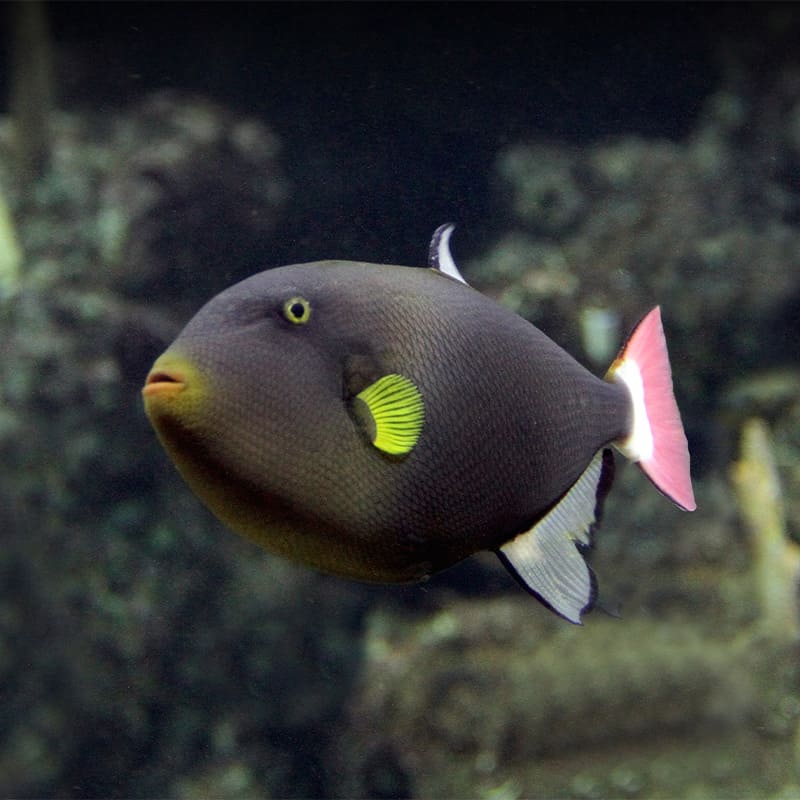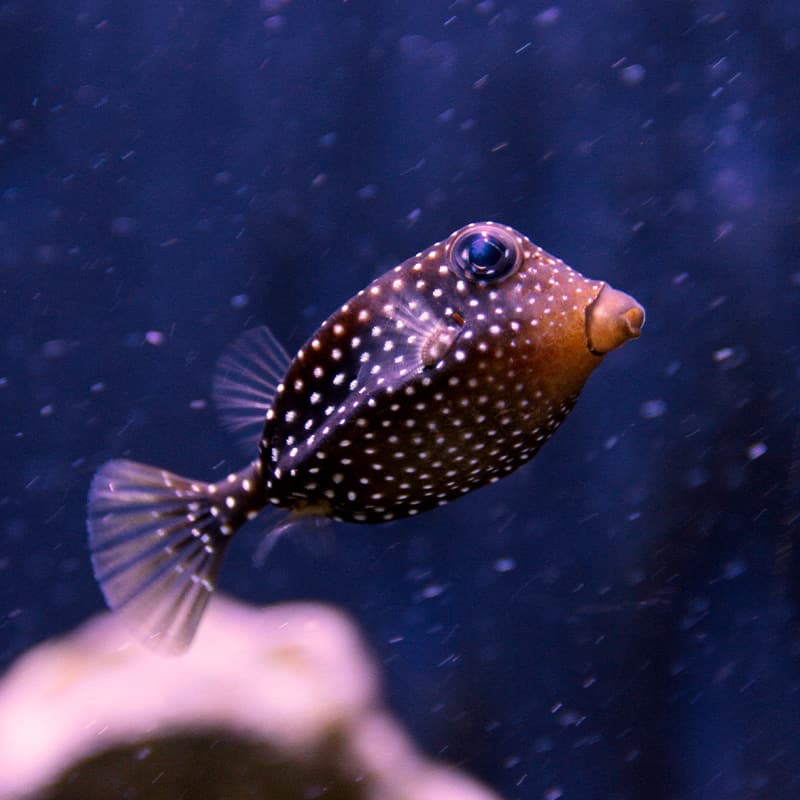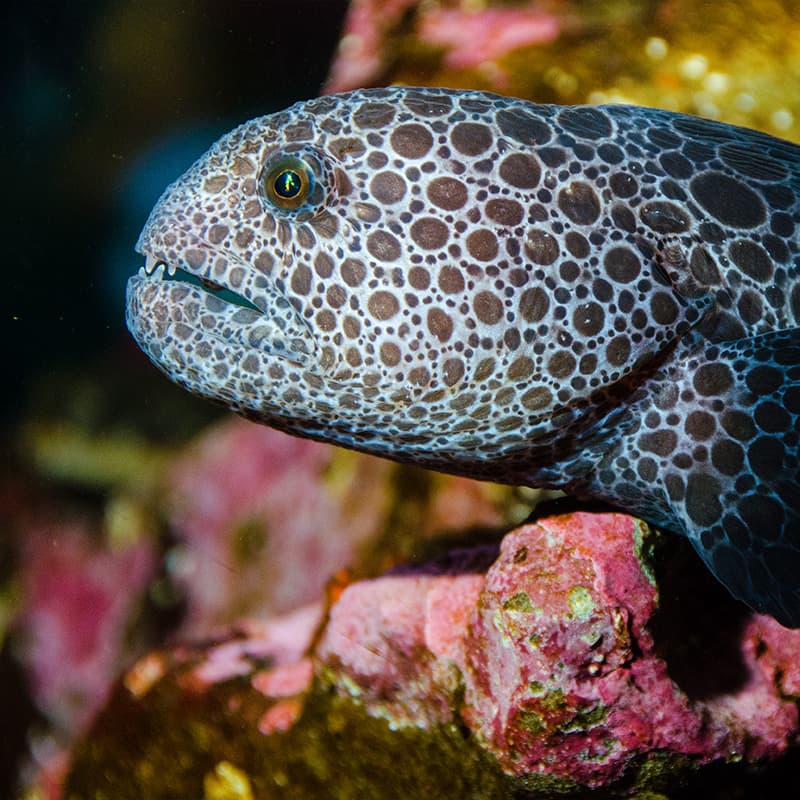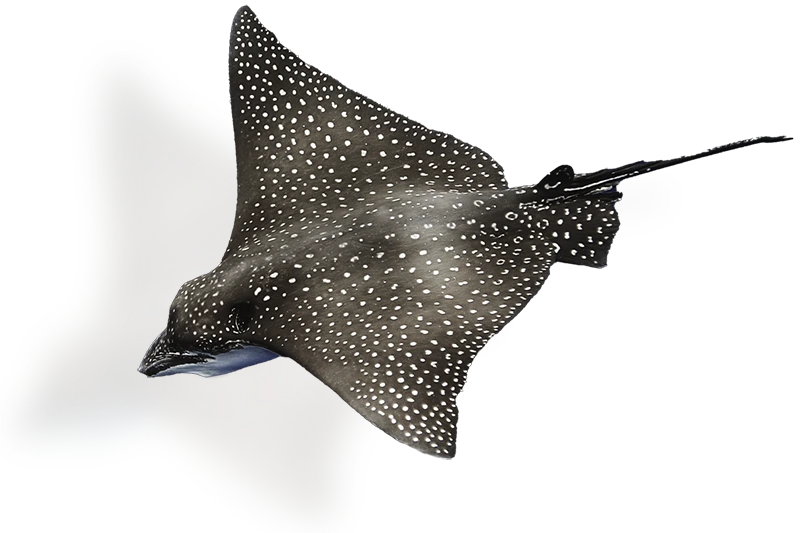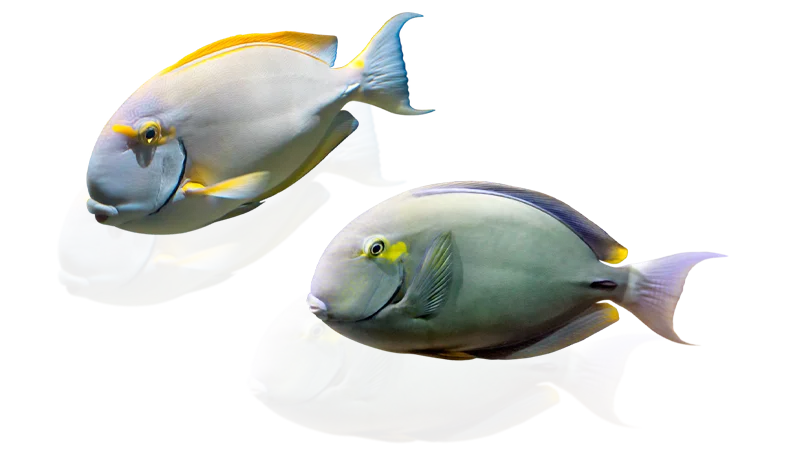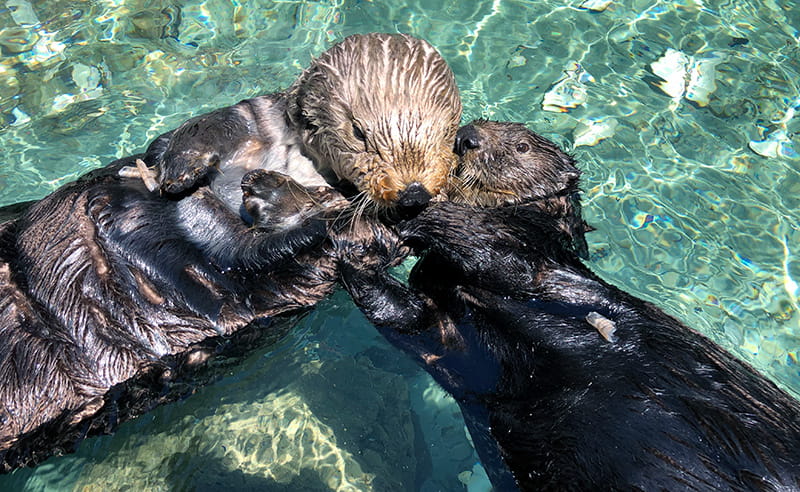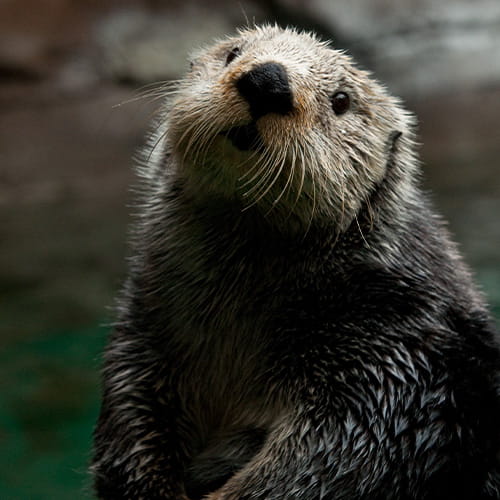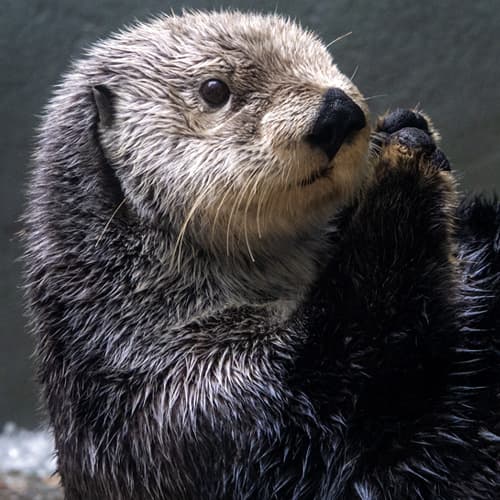- Fish
Spotted eagle rays
Spotlight on eagle rays
Spotted eagle rays—a member of the mesmerizing eagle ray family—are found in the warm, tropical waters of the Indo-Pacific. True to their names, eagle rays glide through the ocean like soaring birds and travel through coral reefs and open waters, up to 200 feet below the surface.
At the Aquarium
- The Reef, Ocean Pavilion
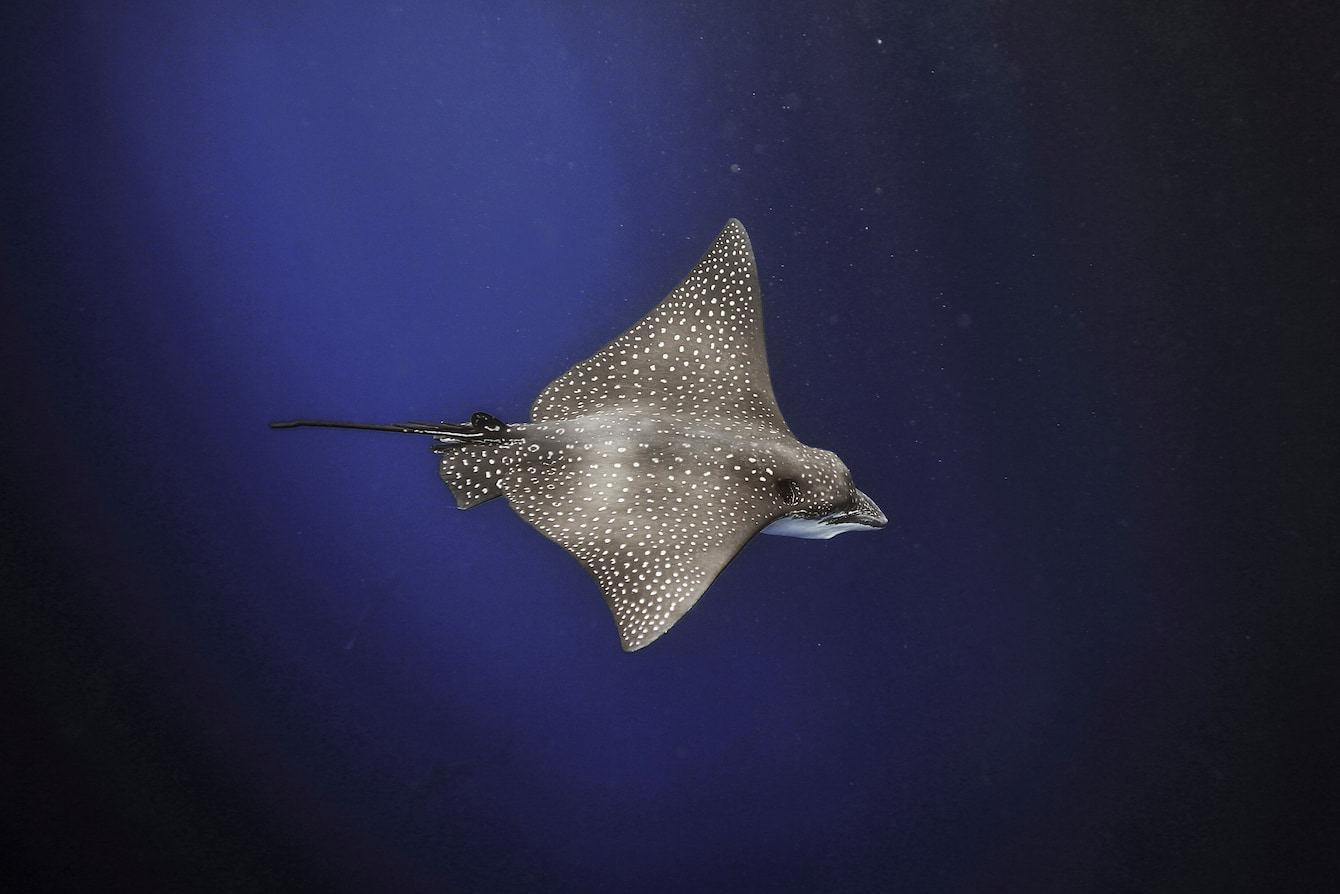
Elasmo-whats?
Spotted eagle rays are elasmobranchs, meaning their skeletons are made of cartilage, the strong but flexible connective tissue that we have in our joints, ears and noses. Their relatives include other rays, sharks and skates. While not the largest elasmobranchs, spotted eagle rays have a wingspan of nearly 10 feet and can weigh up to 440 pounds. Their long tails have up to six venomous stinging spines on them for defense.
Spot the difference
Previously, Aetobatus ocellatus—the species of spotted eagle ray in our care—and Aetobatus narinari were believed to be the same species. However, scientists now recognize these as two distinct species, with Aetobatus ocellatus found in the Indo-Pacific and Aetobatus narinari in the Atlantic. Still, the two species have almost identical common names: spotted eagle rays and whitespotted eagle rays. Talk about confusing! Luckily, their scientific names and physical differences help people tell them apart.
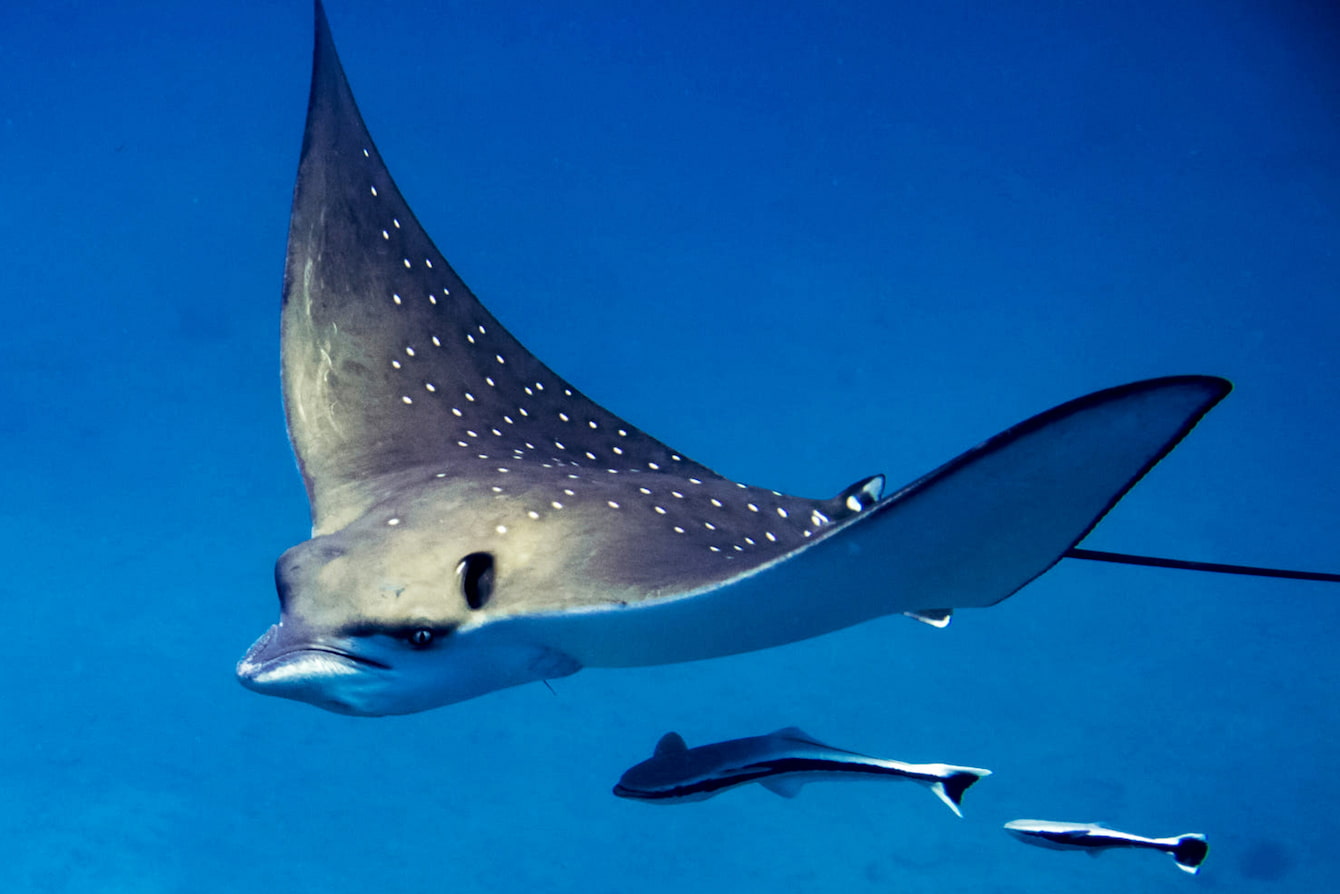
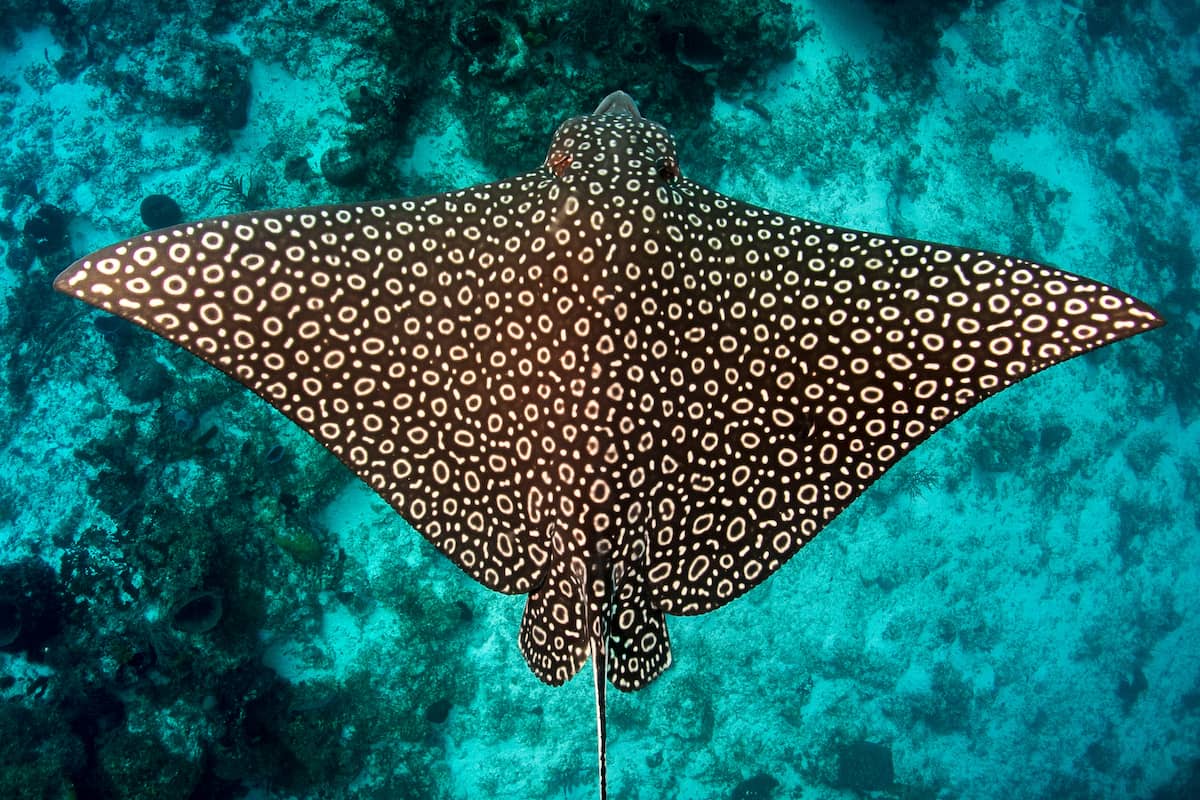
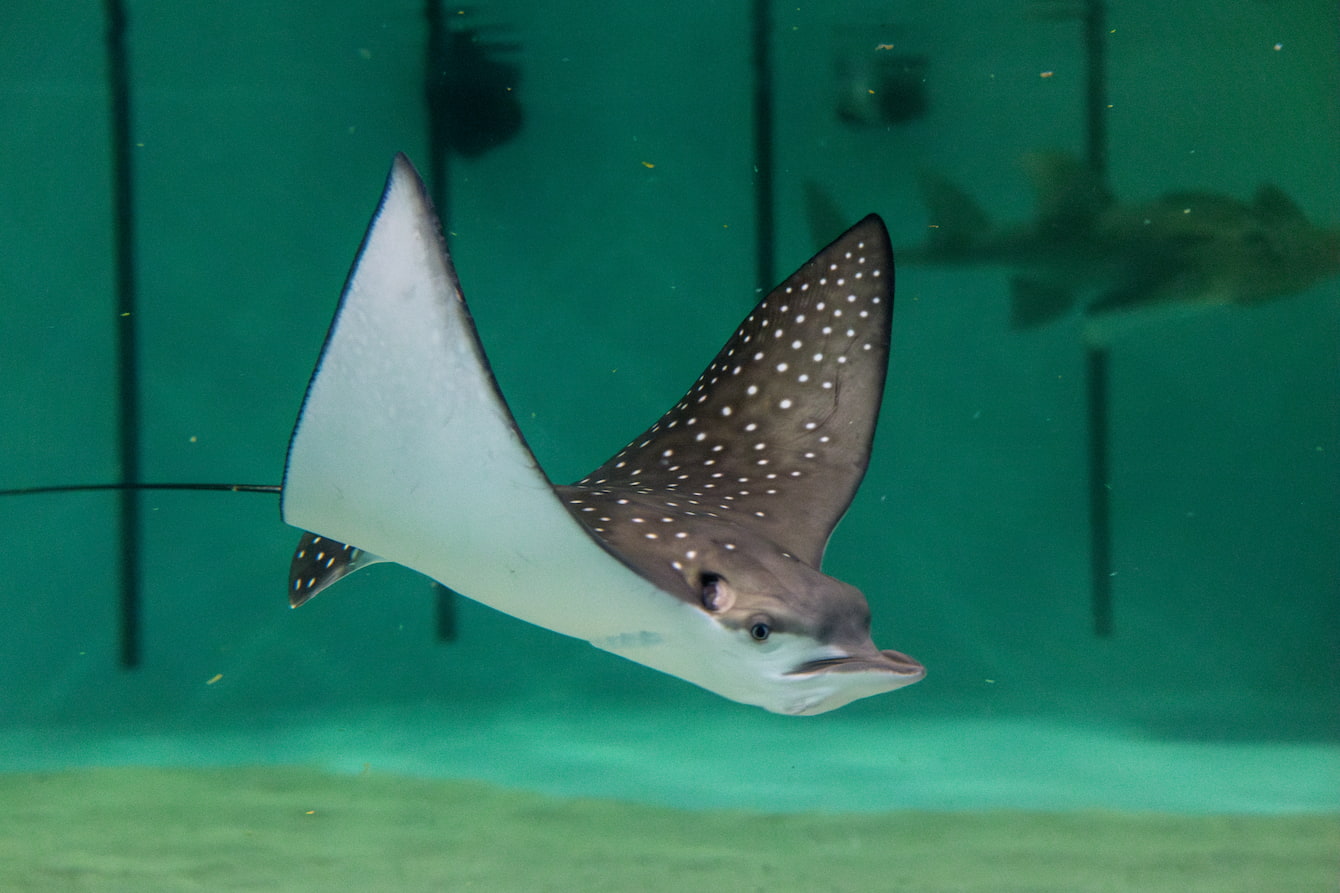
Bottom dwellers up!
Spending time on the bottom helps spotted eagle rays come out on top! These rays feed mostly on fish and bottom-dwelling invertebrates—including crabs, clams, oysters, worms and octopuses—which they find by digging up sand with their snouts. At the Aquarium, spotted eagle rays are taught to associate feeding time with visual and auditory cues—a process known as target training. Want to learn more? Check out this video from our Animal Care Stories series.
How to help eagle rays
Spotted eagle rays are considered vulnerable by the International Union for Conservation of Nature. It’s estimated that their population has decreased by 50–80% over the past 30 years. These rays are often caught in trawls along the seafloor and gillnets. You can help spotted eagle rays by choosing sustainable seafood options, which are harvested using techniques that protect the environment. Monterey Bay Aquarium’s Seafood Watch, which the Seattle Aquarium partners with, is a great resource for choosing sustainable options.
Quick facts
Spotted eagle rays can weigh up to 440 pounds.
Their wingspan is nearly 10 feet long.
Baby eagle rays are called pups.
